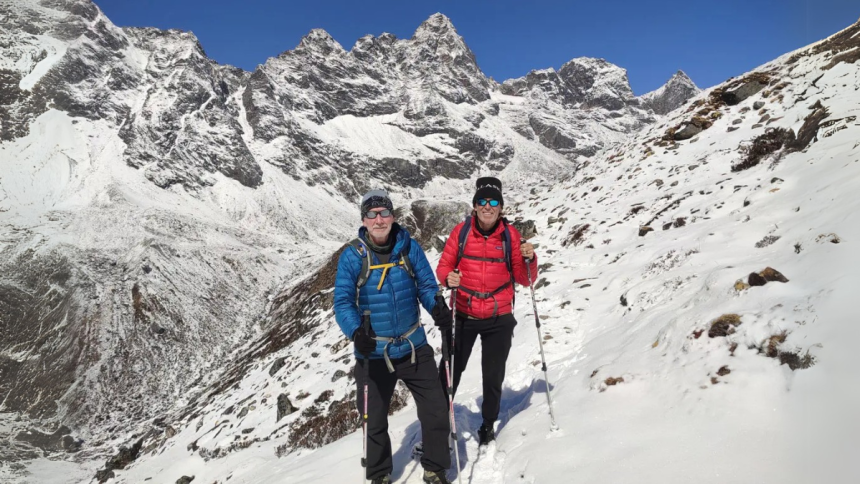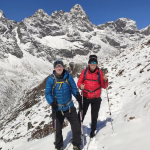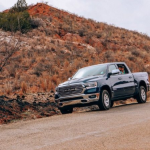A trek in Nepal presents dreamlike outdoor experiences while delivering spectacular views across the country. Before attempting any trek from basic to demanding one must develop proper training according to the trek difficulty level.
Physical and mental preparation must exist before a successful trek because each trail determines its required fitness standards.
Essential Fitness Training for Any Trek
Demanding travel requires preparation for total endurance development, strength enhancement, and sufficient flexibility. Long terrain exploration through Nepalese mountains requires extensive physical preparation because the walking routes consist of steep and uneven paths. A fitness program combining cardio workouts, muscular development sessions and altitude-specific training will protect your body from fatigue and physical damage.
Preparation for trekking requires cardiovascular endurance as its most critical element. Participating in running, swimming and cycling will enhance your stamina while running stairs and hill exercises simulate Nepal’s challenging mountain routes. Every week trekkers should perform at least four to five cardio exercises while increasing their exercise intensity to enhance their heart and lung performance.
First-class strength exercises demand equal time since they focus most prominently on legs
together with core muscles and upper body divisions. The combination of squats and lunges and step-ups along with core exercises that include planks with Russian twists improves strength and balance and stability. Push-ups and shoulder presses help prevent backpack-related shoulder and back distress which occurs during trekking operations.
The Manaslu Circuit Trekking requires participants to properly acclimatize for the high mountain elevation. Before the trek, acclimatization is not achievable but a combination of interval training along with high-intensity workouts improves how your body uses oxygen. The advantage of training at elevated altitudes and using simulated altitude masks can develop if these options are available to you.
The main elements vital to injury protection include both flexibility and recovery practices. Since trekking involves continuous movement across different terrain patterns it becomes essential to include stretching and yoga so people can enhance their mobility. Physical activity engages muscles best through pre-workout stretching followed by post-workout stretching to stay loose along with yoga practices that improve breathing methods for better altitude adjustment.
Proper rest days coupled with foam rolling exercises together with sufficient hydration will help your body adapt to the forthcoming lengthy hiking expedition.
Training for High-Difficulty Treks
The Everest Base Camp trek stands out as one of the busiest yet most strenuous treks operating within Nepal. Travelers must possess excellent cardiovascular fitness and leg strength because this trip extends for 130 kilometers while climbing to 5,364 meters.
Each daily hiking session lasts five to eight hours and demands steep challenges throughout the day. Staff who plan to participate in Everest Base Camp & Manaslu Circuit treks must practice sustained hikes while climbing stairs and perform exercises targeted at their legs and core. The threat of altitude sickness motivates individuals to use interval training which enhances their respiratory system capabilities.
Although less popular than Everest Base Camp the Manaslu Circuit trek presents greater challenges because of its challenging conditions in remote areas. The 177 km trek demands high endurance and resilience because it crosses the extreme Larkya La Pass at 5,106 meters. Three main things necessary for successful altitude conditioning include strength training activities alongside balance drills and walking extended distances across uneven grounds.
Core stability exercises which include planks and side leg raises enable you to carry your backpack safely on uneven terrains. Although the limited availability of teahouses during this trek demands a strong mental toughness to deal with unforeseen obstacles.
Visitors who choose Everest Base Camp Helicopter Tour excursions must practice general fitness for strolls at high elevations as the walks do not require extensive training.
Comparing Challenging and Easier Treks
Less demanding than challenging treks Nepal presents various mild paths which deliver panoramic mountain vistas. People who are new to trekking will find satisfaction in the Ghorepani Poon Hill trek.
The trail reaches the highest point at 3,210 meters yet demands an average level of fitness and includes four to six-hour walks each day. The combination of frequent walks along with moderate strength exercises and stair climber activities serves as a proper preparation method.
The Langtang Valley trek stands as an excellent alternative because it transports hikers to an elevation of 3,870 meters. The trail saves nature exploration and cultural encounters through its
smooth elevation pattern. Brisk walking combined with moderate cardio exercises serve as proper training for people who plan to do this trek.
Trekking to Mardi Himal will take you to 4,500 meters yet it remains less demanding than navigating the Manaslu Circuit. Relying on top-level fitness is unnecessary because the selected paths accumulate moderate elevation but not excessive features. The successful hiking preparation includes hiking routines alongside body weight exercises and stretching practice to develop flexibility.
Everest Base Camp Helicopter Tour Considerations
People who choose to travel to Everest Base Camp by helicopter still need to cope with high altitudes regardless of avoiding strenuous trekking. Any physical training for this activity is optional yet being sufficiently fit is advised. Travelers who engage in brief mountain hikes need to incorporate light exercise along with proper hydration and altitude adaptation exercises for breathwork to avoid physical problems during their mountain experience.
Conclusion
Physical training programs should be implemented for hikers who plan to do Everest Base Camp trekking or the Manaslu Circuit trek or seek an easier option because this practice leads to successful expedition outcomes. A simple training regimen remains beneficial for all visitors who choose to travel to Everest Base Camp with a helicopter. Early preparation along with endurance development will unlock the experience of Nepal’s awe-inspiring mountain ranges.
Lynn Martelli is an editor at Readability. She received her MFA in Creative Writing from Antioch University and has worked as an editor for over 10 years. Lynn has edited a wide variety of books, including fiction, non-fiction, memoirs, and more. In her free time, Lynn enjoys reading, writing, and spending time with her family and friends.















